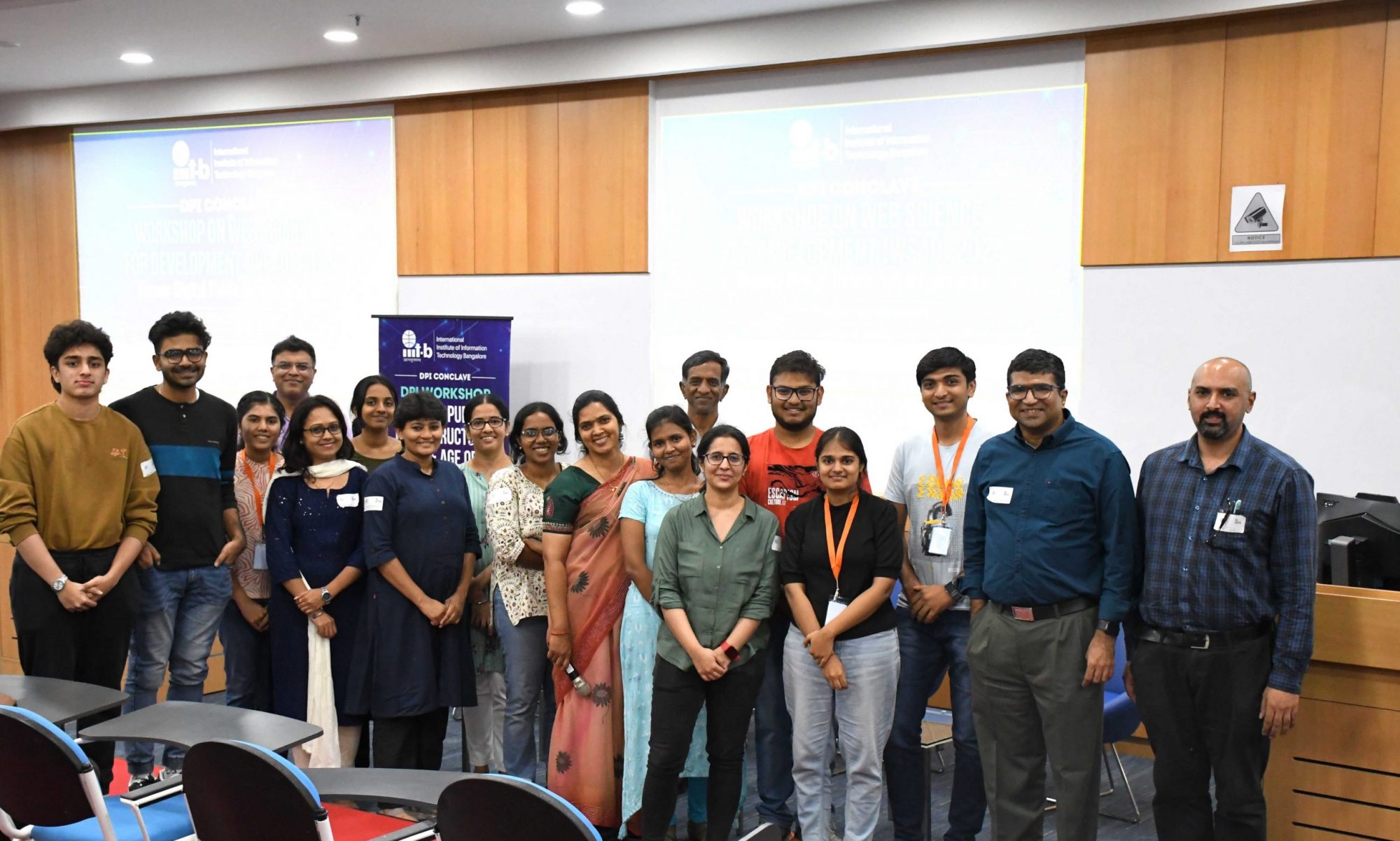Submission Link: https://forms.gle/vYqBEex5Lg8M1jMF6
Deadline: 3rd June 2024 [End of Day]
Poster Specifications: Create an A3 sized poster in PPT /Word doc/ Latex and save it as PDF only.
The link to the WS4D workshop is here
Problem Statement
Students, universities, examination boards, and employers need to access academic transcripts of students applying to higher education, work, or when transferring from one university to another. Such documents can be easily stored and shared online. However, there is a problem of verification of authenticity, enabling privacy-preserving access, as well as prevention of fraudulent or double use of transcripts in such sharing of PDFs, etc online.
Consider an example. After completing a 4-year degree program, a student graduates from a university and receives a degree and academic transcript showing his/her performance. The student is now the legitimate owner of these documents. However, this ownership comes with a clause of immutability— in that, the student cannot unilaterally change the contents of the certificate and transcripts. The university is empowered to alter these documents as the issuer of them (in some cases, even rescind certificates issued to students). However, the university is not the owner of these documents and cannot consent to these documents being used by some third party without the knowledge and consent of the student. Similarly, an employer who is using these documents to grant employment to the student, may have a clause that these same documents may not be used for gaining an alternate employment, while the current one is active. The employer may sometimes need to further share these documents with potential clients and/or regulators, however, this cannot be done without the knowledge or informed consent of the owner of these documents.
A DPI architecture needs to provide sufficient underlying mechanisms where such nuances of ownership and entitlement such as the above, can be supported reliably. Privileges, obligations and liabilities should be made known to each stakeholder separately, and enforced by the architecture. Such an architecture should ideally be decentralized in nature, and should not empower just one entity to enforce these semantics, making this one entity the single point of failure and compromise.
We invite you to design a solution using building blocks of the DPI architecture for managing, verifying, and sharing academic transcripts of students with other universities, companies, examination boards, etc. This solution should enable exam boards or universities to make available academic transcripts which students can share with other universities or companies at the time of applying for higher studies or employment. The solution should prevent fraudulent use as well as double use of documents, e.g. if a student has secured admission in a university, the student cannot, while holding on to the seat, apply to another university for an equivalent degree course.
Authors of the selected posters will have an opportunity to present their ideas on the day of the workshop.
More information on Digital Public Infrastructures:
Digital Public Infrastructures or DPIs enable countries, communities and businesses to achieve societal outcomes at scale using open and interoperable technologies to promote innovation and inclusion. It employs the following architectural principles to achieve this development:
DPI Tech Architecture Principles:
Interoperability – To prevent information/data silos, monopolization, and walled gardens with the help of published protocols & standards/specifications for the ecosystem to adopt and comply with.
Minimalist & Reusable Building Blocks – A full solution approach assumes just one solution fits all but a DPI approach uses minimalist components that perform one function well to catalyze combinatorial innovation and user-centric solution.
Diverse, Inclusive Innovation – Promote inclusion through the use of open APIs and other standards.
Federated & Decentralized by Design – Avoid centralisation to prevent over-aggregation of information by using solutions like wrapper apis across disparate systems.
Security & Privacy by Design – Build a ‘Trust no one architecture’ that operates on optimal ignorance – each system should know as little as possible.
Please refer to this website to familiarize yourself with DPI thinking and how you can build your own DPIs.

